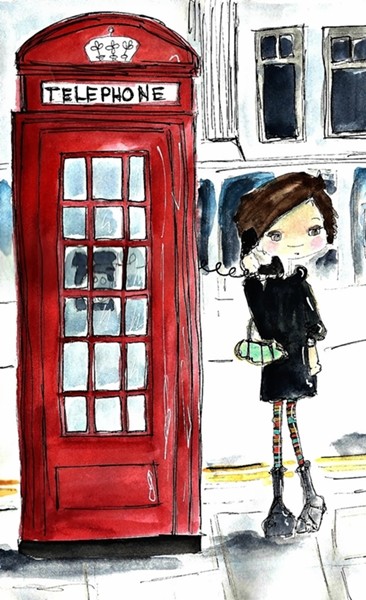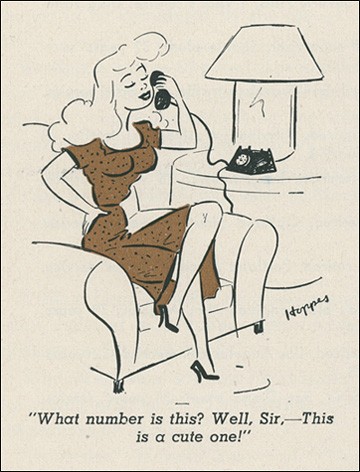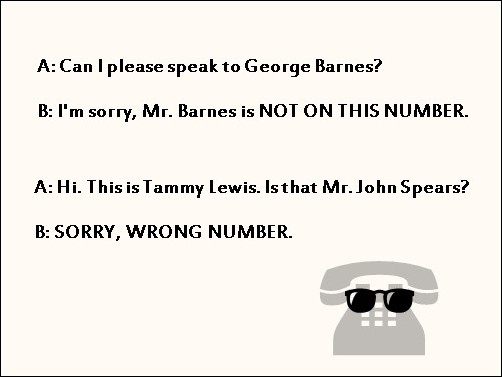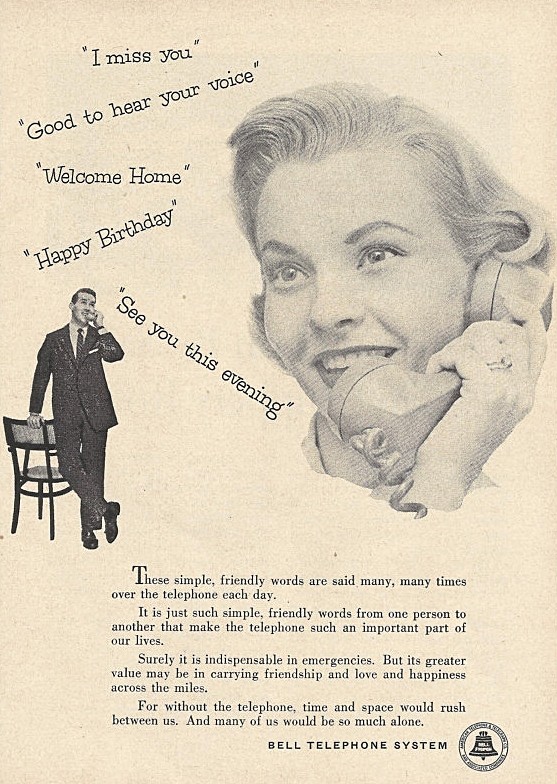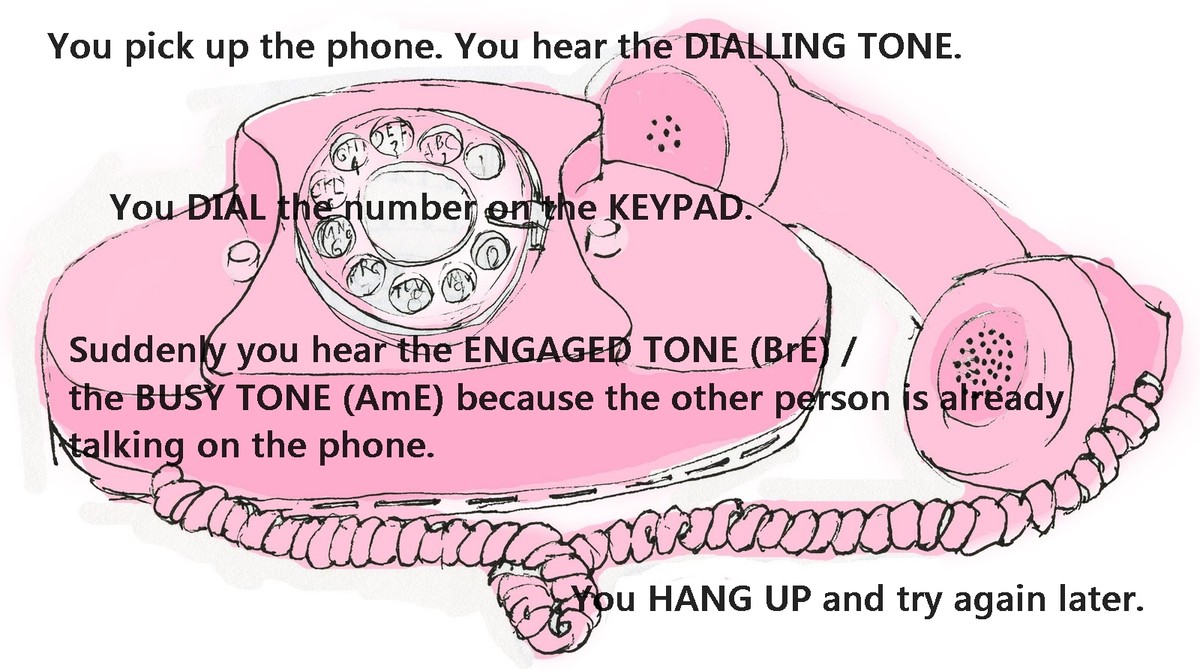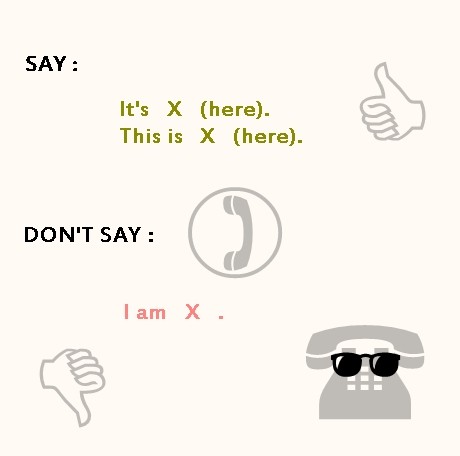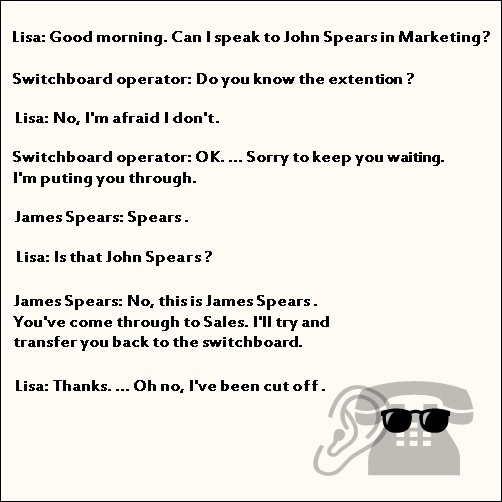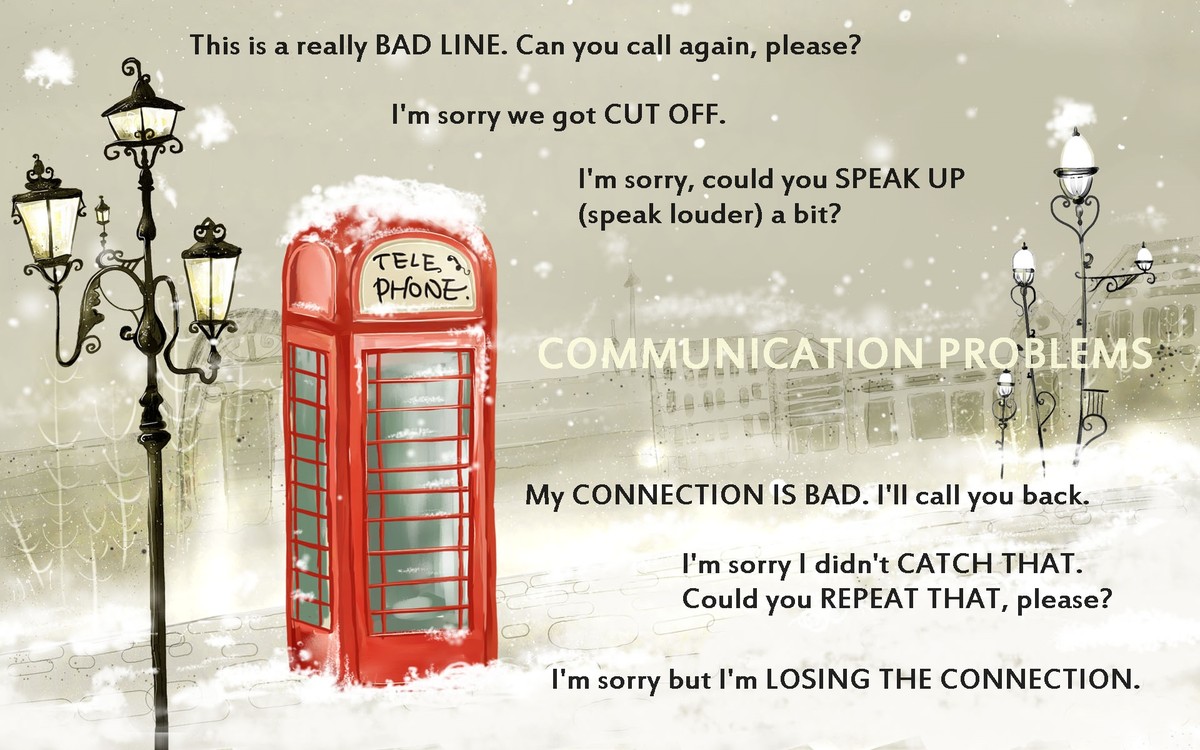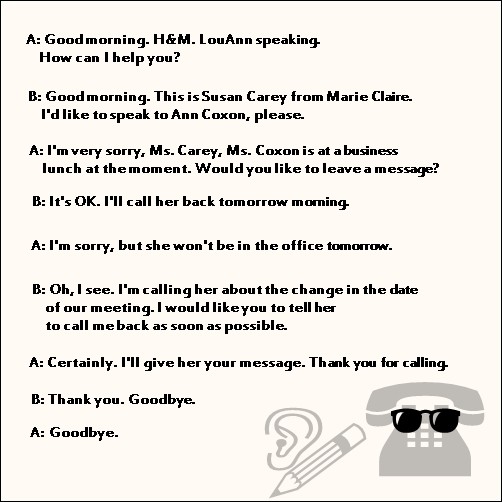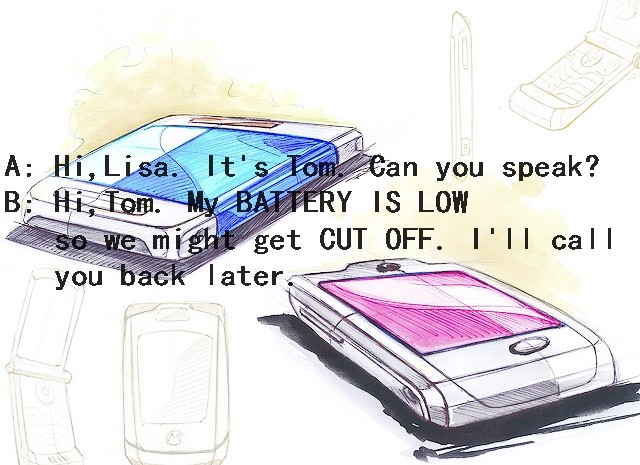The telephone is one of the most wonderful inventions in the history of mankind.It is a telecommunications device that is used to talk to someone who is in another place. Alexander Graham Bell patented the first telephone in 1876. Thomas Edison perfected it by focusing on the weak part of Bell’s invention – the transmitter. The two inventors gradually changed the world by making communication between people easier. Numerous modifications in the structure and design of the telephone followed, and in 1973, the inventor Martin Cooper introduced to us the first cell phone (AmE). The English comedian Ernie Wise made Britain’s inaugural mobile phone (BrE) call on New Year’s Day in 1985, and now, less than three decades later, the mobile phone is an indispensable part of our lives.
This article will show you how telephone calls are made in the English language. In the examples below, A is the person answering the phone, and B is the person making the phone call.
Answering the Phone
There’s more than one way of answering the phone when someone calls you. Most people answer the phone at home by saying ‘Hello’:
- A: Hello.
- B: Hi, Sarah, it’s me / Leila / James etc.
Some British speakers might answer the phone by giving you their telephone number:
- A: 56570
- B: Hello. This is Brett Andrews. Is that Damon Clayton?
- A: Speaking.
REMEMBER: You say each digit of the telephone number. For instance, you would say the number 56570 as five six five seven oh/zero. You can say the number 0 either as oh or zero. When a number is repeated, you can use the word double. For example, the number 5445 is read as five double four five.
If you don’t recognize the caller’s voice, you can ask who it is. You can say ‘Sorry, who is it?’, ‘Who’s calling?’ or ‘Who is this?’ For example:
- A: Hello.
- B: Hello.
- A: Sorry, who is it? / Who’s calling? / Who is this?
- B: It’s me, Cindy. / This is Johnny Weston. / It’s James Black here.

If you recognize the caller’s voice when they say ‘Hello’, you can say ‘Hello’ followed by their name:
- A: Hello.
- B: Hello, Sara.
- A: Hello, Alex. How are you?
If you think that you know who the caller is – when they haven’t introduced themselves over the phone immediately – you can say, for example, ‘Is that…?’ or ‘That’s…, isn’t it?’:
- A: Hello.
- B: Hi. Can I speak to Charlie?
- A: I’m afraid he’s gone out. Is that Max? / That’s Max, isn’t it?
- B: Yes.
People at work will answer the phone by giving you the name of the organization or department they are working for. For example:
- A: London Medical Center.
- B: Hello. I’d like to make an appointment to see one of the doctors tomorrow.
- A: Certainly, sir. Can you please give me your … ?
You can also answer the phone at work by giving the caller your own name:
- A: Hello. Amelia Anderson speaking.
- B: Hello. It’s Roxanne Smith. Can I talk to my manager / supervisor, please?
- A: Hold on. / Just a moment, please. I’ll put you through to (connect you with … ) Mr. Hurst.
If you are interested in the identity of the caller, you can say ‘Who’s calling?’ or ‘Who’s speaking?’ For example:
- A: Ferguson & Johnson.
- B: Hello. Can / Could I speak to Mr. Johnson, please?
- A: Who’s calling, please?
- B: The / My name is Pierce.
- A: Hold on a minute, sir. He’s on another line.
If the caller has got the wrong number, you can say ‘I think you’ve got the wrong number’ or ‘Sorry, wrong number’
Telephoning Someone
When you’re phoning friends and family, you can just say ‘Hello’ or ‘Hi’ when they answer the phone, if you think they will recognize your voice. You can also add their name:
- A: Hello.
- B: Hi. / Hello, Sara.
- A: Hello, Don, how are you?
- B: Well, not so good.
If you want to make it clear who you are when you phone someone, you can say ‘It’s…’ or ‘This is…’. For instance:
- A: Hello.
- B: Hello. It’s Don. or
- A: Hello.
- B: Hello, Sara. This is Don.
When you’re asking for general information, you don’t need to give your name:
- A: Citizen’s Advice Bureau.
- B: Hello. I’d like some advice about …
If you’re not sure who has answered the phone you can say ‘Who am I speaking to?’:
- A: Hello.
- B: Hello.
- Who am I speaking to?
You can also check that you have the right person or number by saying ‘Is that…?’, or by just saying the number like a question:
- A: Hello.
- B: Hello. Is that Mr. Kelly?
- A: Yes, it is. / Speaking. or
- A: Hello.
- B: Hello? 345 9876?
- A: Yes.
A note: Speakers of American English may say ‘Is this…?’
Communication Problems
Here are some handy expressions you can use in situations when telephone communication problems occur:
Asking to Speak to Someone
If the person who answers the phone is not the person you want to speak to, you can say ‘Can I speak to … , please?’ or ‘Is … there?’. For example:
- A: Hello.
- B: Hello. Can I speak to Anna? / Is Anna there?
- A: I`m sorry, she’s not at home at the moment.
- B: Can I leave a message?
- A: Yes, of course.
If you’re making a business call, you can say ‘ Can / Could I speak to …, please?’
- A: Ferguson & Johnson.
- B: Hello. Can / Could I speak to Mr. Ferguson?
- A: I’m afraid he’s not in at the moment. Would you like to leave a message?
- B: No, it’s alright. I’ll call back later.
If the person you are speaking to is in fact the person you want, they sometimes say ‘Speaking’. For example:
- A: Personnel.
- B: Hello. Could I speak to Mr. Jackson, please?
- A: Speaking.
Ending a Phone Call
When you end a phone call, you say ‘Goodbye’ or, informally ‘Bye’. People sometimes also say ‘Speak / Talk to you soon’, ‘Speak / Talk to you later’ or ‘Thanks for calling / ringing’. For example:
- A: I’m afraid we can’t talk right now. I’m in a meeting. / I’m in the car. Can I call you back?
- B: That’s alright, I’ll phone/ring back in an hour.
- A: OK. Speak to you later. Thanks for calling/ringing.
- B: Goodbye. / Bye.
- A: Hi. This is Linda Everton here. Is that Mr. Anderson?
- B: Speaking.
- A: I’m calling because there seems to be a problem with the contract you sent me last week. Is this a good/convenient time to call?
- B: I’m rather tied up at the moment. Could you call back in an hour?
- A: Certainly. I’ll call you back in an hour. Bye for now.
Learning telephone etiquette in English takes some practice. Before you start making and/or taking telephone calls in English, you should first learn the most common expressions of telephone English. Make sure you use informal language in informal situations and formal language in formal situations. You can always ask another ESL student to practice talking on the phone with you.

